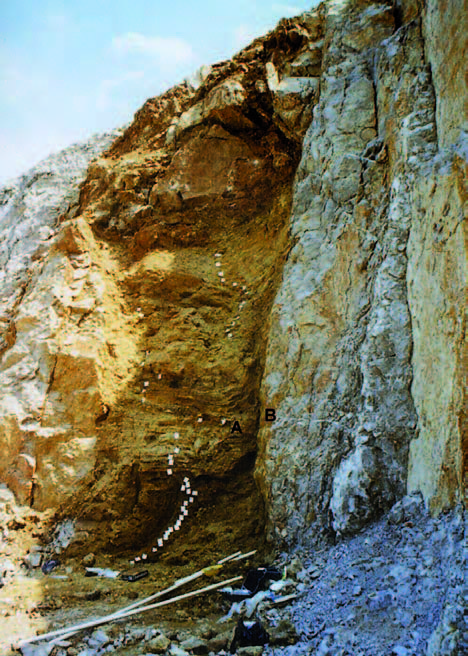Fossil Vertebrates and Paleomagnetism Update of One of the Earlier Stages of Cave Evolution in the Classical Karst, Slovenia: Pliocene of Črnotiče II Site and Račiška Pečina Cave
DOI:
https://doi.org/10.3986/ac.v36i3.179Abstract
For the first time in the Classical Karst, paleontological data enabled to match the magnetostratigraphic record precisely with the geomagnetic polarity timescale in two studied sites: (i) a series of speleothems alternating with red clays in Račiška pečina Cave (Matarsko podolje), and (ii) an unroofed paleocave of the Črnotiče II site (Podgorski kras Plateau) completely filled by fluvial clastic sediments covered by speleothems. The later sites are also characterized by a rich appearance of fossil tubes of autochthonous stygobiont serpulid Marifugia cavatica. The vertebrate record is composed mostly of enamel fragments of rodents and soricomorphs. Absence of rootless arvicolids as well as taxonomic composition of the mammalian fauna suggests the Pliocene age of both sites. For (i) Račiška pečina (with Apodemus, cf. Borsodia) it was estimated to middle to late MN17 (ca 1.8–2.4 Ma), while (ii) the assemblage from Črnotiče II (with Deinsdorfia sp., Beremedia fissidens, Apodemus cf. atavus, Rhagapodemus cf. frequens, Glirulus sp., Cseria sp.) is obviously quite older: MN15–MN16 (ca 3.0–4.1 Ma). In respect to congruence of biostratigraphic and paleomagnetic data and a reliable sedimentary setting of the samples we propose to apply the respective datum also as the time of one ancient speleogenetic phase in the Classical Karst.
Downloads

Downloads
Published
How to Cite
Issue
Section
License
Authors guarantee that the work is their own original creation and does not infringe any statutory or common-law copyright or any proprietary right of any third party. In case of claims by third parties, authors commit their self to defend the interests of the publisher, and shall cover any potential costs.
More in: Submission chapter




